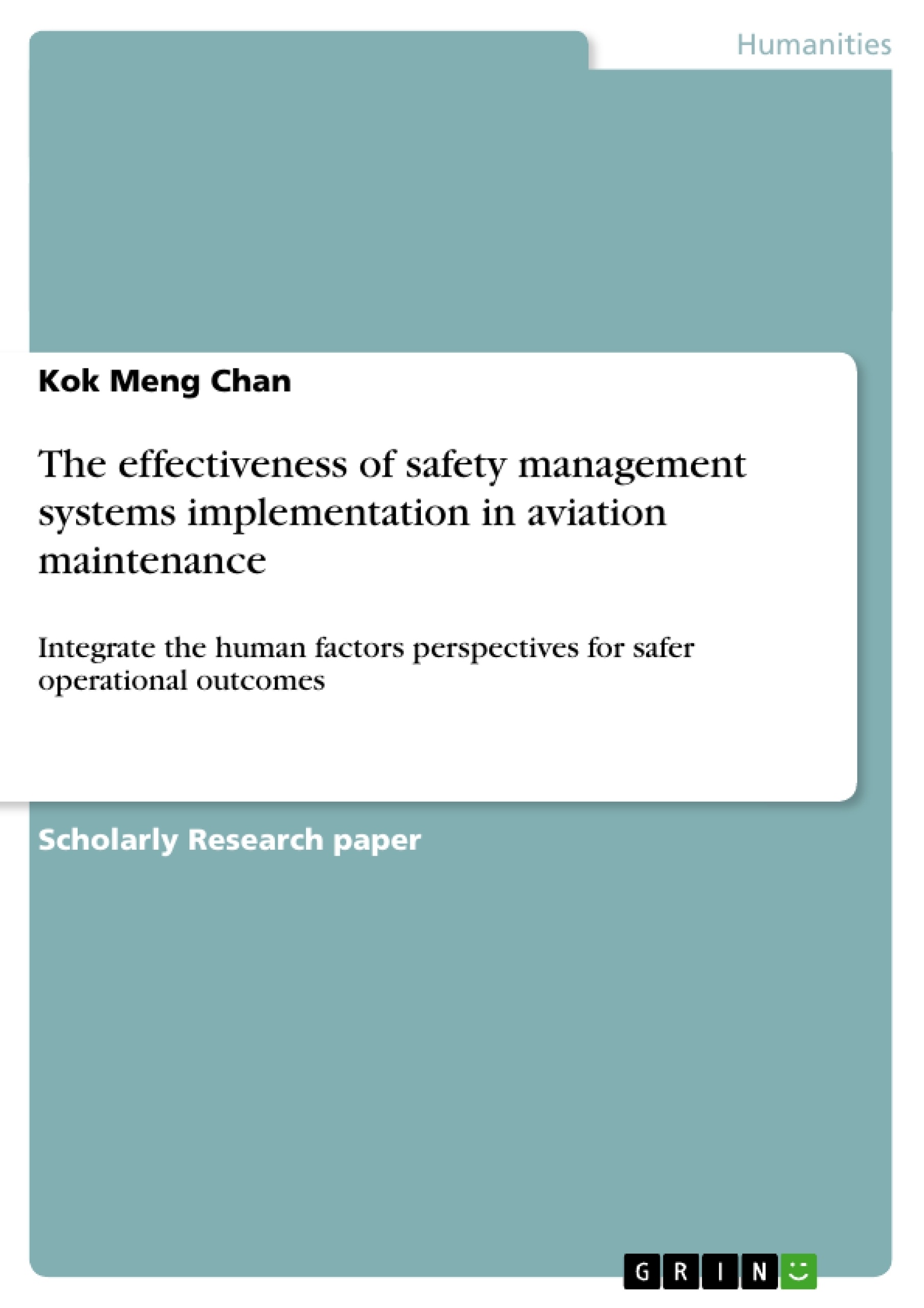Safety management system (SMS) program is a comprehensive, systematic and continuous process for recognizing hazards and managing risks for a viable aviation business to enhance safety. With proper guidance and planning from current literature, it recognizes the explicit complexity to distill more insights to the aspects of an SMS implementation. Real rigor must be in place for the underlying mechanism to detect the weaknesses within the defense mechanism, fix it before they are manifested as an undesired event. This is a shift from the traditional reactive systems to proactive/predictive systems.
SMS is not a process to solve a specific safety issue, but rather an explicit, consistent and structured protocol which can resolve many issues to reduce risk realistically or as low as reasonably practicable (ALARP). The four essential constituents- safety policy and goals, risk mitigation management, safety assurance and safety promotion, represents the foundation for SMS. This article delineates the SMS processes and the integration of human factors perspectives with the intent to propose an initial implementation program for a maintenance organisation into four phases. Ultimately, the effectiveness of an SMS implementation means the organization can manage the complexity of these mechanisms to defend against risk incubation to ALARP.
Inhaltsverzeichnis (Table of Contents)
- Abstract
- Introduction
- Safety overview and definitions
- The SHELLO Model-The importance of an organisational subset
- An introduction to Safety Management Systems (SMS)
- SMS Personnel selection
- Gap Analysis
- Safety management systems framework and its key constituents
- Safety policy and objectives
- Risk and mitigation management
- SMS function- Reporting culture
Zielsetzung und Themenschwerpunkte (Objectives and Key Themes)
This article aims to explain the process of implementing a Safety Management System (SMS) in an aviation maintenance organization, specifically integrating human factors perspectives for safer operational outcomes. It focuses on the practical application of SMS principles in a real-world setting, advocating for a shift from reactive to proactive safety measures.
- The Importance of Human Factors in Aviation Safety
- The Role of Safety Management Systems (SMS) in Aviation Maintenance
- The Four Key Constituents of a Successful SMS Framework
- Implementing a Phased Approach to SMS Integration
- Developing a Reporting Culture and Proactive Safety Practices
Zusammenfassung der Kapitel (Chapter Summaries)
- Abstract: This section introduces the concept of SMS as a comprehensive, systematic, and continuous process for managing hazards and risks in aviation maintenance. It highlights the shift from reactive to proactive safety systems and emphasizes the importance of human factors considerations.
- Introduction: The introduction delves into the importance of safety in aviation, acknowledging the prevalence of human error and its impact on accidents. It discusses the need for a formal safety management system to address this challenge.
- Safety overview and definitions: This section defines key terms such as safety, risk, and safety culture. It emphasizes the importance of a just culture, informative culture, and reporting culture within aviation maintenance organizations (MROs).
- The SHELLO Model-The importance of an organisational subset: The SHELLO model is introduced as an extension of the SHELL model, emphasizing the organizational context of accidents and incidents. It highlights the importance of managing human error within the framework of risk management.
- An introduction to Safety Management Systems (SMS): This section introduces the ICAO's recommendations for implementing SMS in aviation service operators, including airlines and MROs. It emphasizes the value of SMS in systematically managing hazards and risks in all aspects of aviation operations.
- SMS Personnel selection: The selection process for key personnel involved in the implementation of SMS is outlined, including the safety committee, accountable executive (AE), and subject matter experts. The importance of buy-in from higher management is emphasized.
- Gap Analysis: The process of gap analysis is explained, highlighting the need to align existing MRO systems with SMS requirements. Effective communication and shared vision are identified as crucial aspects of successful implementation.
- Safety management systems framework and its key constituents: This section delves into the core components of an SMS framework, including safety policy and goals, risk mitigation management, safety assurance, and safety promotion. The importance of tailoring the SMS approach to the specific operational environment is stressed.
- Safety policy and objectives: The first phase of SMS implementation focuses on developing a clear safety policy, establishing corporate commitment, defining roles and responsibilities, and fostering a safety culture.
- Risk and mitigation management: The second phase involves implementing a risk management process using the ALARP principle. This involves recognizing hazards, assessing risks, and applying controls to mitigate them. The shift from reactive to proactive safety measures is discussed.
- SMS function- Reporting culture: The final phase focuses on establishing a robust reporting culture, encouraging the reporting of near misses and safety issues without fear of punishment. The importance of a clear and confidential reporting system is emphasized.
Schlüsselwörter (Keywords)
Aviation safety, safety management systems (SMS), human factors, risk management, aviation maintenance, organizational culture, reporting culture, proactive safety, hazard identification, risk assessment, ALARP (As Low As Reasonably Practicable).
- Quote paper
- Kok Meng Chan (Author), 2011, The effectiveness of safety management systems implementation in aviation maintenance, Munich, GRIN Verlag, https://www.grin.com/document/271116



